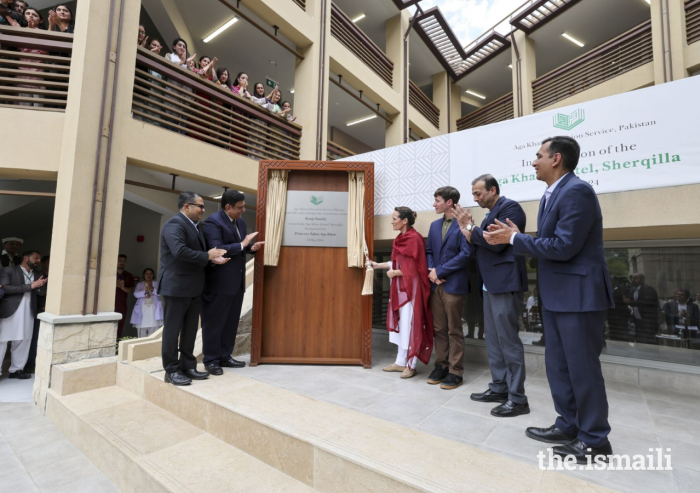The new medical centre is equipped to provide high quality diagnostics and secondary healthcare services. It also serves as a digital link between clinics in outlying villages and connects them with state-of-the-art medical resources in Pakistan and around the world.
The medical centre is part of a “hub and spoke” model, says Nadeem Husain, Chief Executive Officer of Aga Khan Health Service, Pakistan. “The Aga Khan Medical Centre in Gilgit provides quality secondary healthcare to communities that are presently underserved, and is linked with primary health care units in Northern Pakistan as well as the Aga Khan University Hospital in Karachi.”
“In addition to facilitating patient care, the new centre also adds capacity to provide continuing education for nurses, doctors and other health professionals, as well as to serve as a base for clinical research.”
Princess Zahra and Prince Rahim arrived in Pakistan on Monday for a working visit. In addition to inaugurating the medical centre, they visited a model high school in Rahimabad, the Aga Khan University’s Professional Development Centre in Gilgit, and a Jamatkhana in Baladul Karim.
The Diamond Jubilee Model High School in Rahimabad is one of 106 Aga Khan Schools in Gilgit-Baltistan serving more than 23 000 children in the region. The school recently improved and expanded its facilities, adding pre-primary classrooms and a multi-purpose hall reflecting its commitment to early childhood education, a programme launched in 2009.
The Aga Khan University’s Professional Development Centre, North works with over 146 schools serving more than 76 000 students to improve the quality of instruction, management and administration. Over 15 000 teachers, head teachers, education managers, and district supervisory staff have benefitted, of which more than half are women.
In an earthquake-prone region like Gilgit-Baltistan, Jamatkhanas serve as safe shelters. All structures under the Jamatkhana development programme are seismically resilient and designed to resist seismic forces for a zone higher than that defined by the Geological Survey of Pakistan.
“The idea of constructing buildings that are safe from disaster using affordable and accessible technology was once a dream that was out of reach,” says Hafiz Sherali, President of the Ismaili Council for Pakistan. “The Baladul Karim Jamatkhana is also a demonstration of the established model of self-help construction where the Jamat provides assistance with land, local material and labour.”
Completed in 2014, the Baladul Karim Jamatkhana uses a seismic resistant technology developed by the Aga Khan Agency for Habitat, and is situated on a site that is safe from natural hazards.












